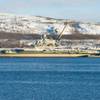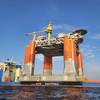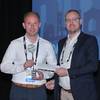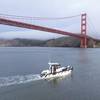First NEEC Graduate Begins Work at NSWCCD-SSES
PHILADELPHIA - The first graduate of the Naval Engineering Education Center (NEEC) began work February 13 as a naval architect with Naval Surface Warfare Center Carderock Division - Ship Systems Engineering Station's (NSWCCD-SSES) Advanced Machinery Systems Integration Branch in Philadelphia.
The NEEC, located in Ann Arbor, Michigan, was launched in July, 2010, to develop the talent of future naval engineers. The educational center was established through a $3.2 million contract award from the Naval Sea Systems Command (NAVSEA), and provides young engineers and scientists access to projects of interest and importance early in their academic careers to build knowledge and enthusiasm for the field. Students are partnered with trained professionals in the military and private sector to guide them through current projects and to offer insight to post-education opportunities.
"After I came (to NSWCCD-SSES) for my interview, I knew immediately I wanted to work here," said NSWCCD-SSES' newest engineer, Mayer Nelson, who graduated from the University of Michigan with a master's in naval architecture and marine engineering in August, 2011. "I really enjoyed seeing what is being done here, and what I could one day be doing."
Shortly after his arrival at the university, Nelson accepted a research position funded by NEEC to work with a professor on total electric ship design. Nelson presented his research, "Integrated Design of Naval Propulsion Systems to Reduce Lifetime Fuel Consumption," at the NEEC conference in Norfolk, Va., in June, 2011, which attracted the attention of the chief technologist for NSWCCD-SSES' Machinery Research and Engineering Department because of its relevance to work being done in Philadelphia.
"We talked a little, and then he asked me what I was doing after graduation," Nelson said.
NSWCCD-SSES Philadelphia, a NAVSEA field activity, provides the Navy's primary technical expertise and facilities for naval machinery research, development and life-cycle engineering.
In his new role at NSWCCD-SSES, Nelson supports research and development efforts to advance system-level modeling and simulation capabilities, and helps develop tools and processes to conduct advanced system trade-off analysis support for new ship concept designs.
"I'm just really glad I was part of NEEC," said Nelson. "It's a perfect marriage between academia and industry. It's a great way to meet people who can provide future engineers with a career."
Bringing aboard young engineers such as Nelson is why NAVSEA partnered with, and funded, the Naval Engineering Education Center.
"One of the greatest challenges we face today is meeting our obligation to the nation to build and maintain a fleet of ships in the twenty-first century capable of meeting the threats we're facing out there. Our environment is one of downsizing, and our demands from the fleet increase in complexity and sophistication," said NAVSEA Commander Vice Admiral Kevin McCoy at NEEC's 2010 launch ceremony. "We're not the only ones out there with weapons and technology, and that means our products not only have to be introduced in the fleet immediately; they have to be a step ahead of the threats they face. As we look to the future, we need to have a new generation of engineers and scientists who will continue to meet that challenge. We have a lot of competition for those invaluable human resources who are fluent in the languages of science, technology, engineering and math. I'm convinced that this partnership with NEEC offers tremendous hope in attracting, developing and maintaining a world-class naval engineering workforce."










